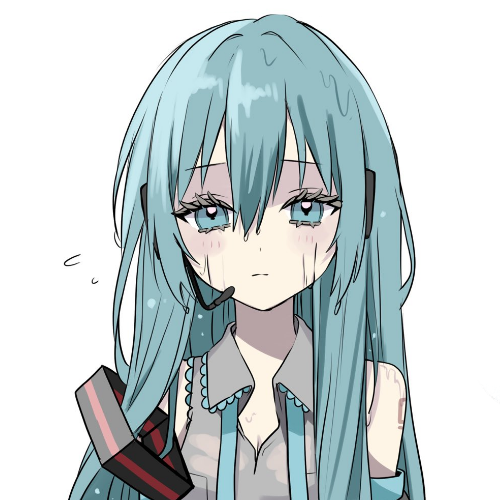I’ve already made a post about this, I made the switch from an Nvidia GPU to an AMD one and I was wondering if I needed to install anything extra. I’ve heard the drivers are included inside the kernel but how do I ensure that it’s installed?
Not really. Default drivers should work just fine. If you want to make sure they’re installed and running, run the following in a terminal:
glxinfo | grep MesaIf you have any output, you have Mesa. It’ll tell you what version you have as well.
yes it’s installed, also is there a program I can use to configure? Something like NVIDIA control panel but for AMD
I like corectl for overclocking and whatnot. But as far as I know there isn’t something similar to Nvidia control panel on windows
I’ve personally never heard of or used any driver control panels for mesa. It just works with 0 fuss for me. If you mean graphical settings, your desktop environment’s control panel should have some knobs and buttons.
The AMD driver is built into the kernel, so it just works (or it doesn’t, and you have no output or everything is super slow). If your display works and isn’t laggy as hell, it works.
You should uninstall the Nvidia drivers for better stability and to make updates a bit faster.
There are some helper packages you could want, depending on your distro. Installing the AMD Vulkan libraries, if they aren’t installed out of the box, is important for games. If you open a modern game and it’s slow as hell, that’s likely why.
For hardware accelerated video decoding/encoding, you’ll want the right VAAPI/VDPAU drivers. Which ones you need depends on your exact GPU and I don’t know which ones are installed by Pop_OS already.
I don’t think there are many GUI tools to debug VAAPI or Vulkan, but
vainfoandvkinfoshould dump a load of information about either. If you see stuff like “software rendering” or “llvm pipe” in the info they dump, that means the relevant AMD driver probably hasn’t loaded right. If that happens, you may need to install additional packages to get everything running optimally.Installing the AMD Vulkan libraries, if they aren’t installed out of the box
They said they were on Pop_OS, I’m 99% sure they’re preinstalled
one more thing, for some reason after I installed the GPU it does this glitch thing yes. I tried rebooting
That’s very strange. There are plenty of reasons for a GPU to be glitching like that, but I wouldn’t expect it to happen on an empty screen.
I’d start by checking the cables, the display, and verifying that the GPU is seated right and has all the right power connectors hooked up. Then, I’d look into the system logs (usually an application called “logs”, or
sudo dmesgif you prefer the command line) to check if the driver prints any warnings or errors on boot. If that doesn’t provide a clue, I’d check another OS (either a Linux install USB or a Windows install) to confirm whether or not it’s got something to do with your particular setup.I don’t know what kernel version Pop_OS! Is on, but it’s worth trying a kernel update. Kernel 6.1 and up received a whole bunch of AMD GPU improvements, so updating the kernel may help.
Lastly, some GPU manufacturers also publish BIOS updates for the GPU itself. If there’s an update available for yours, it’s worth reading the change log and seeing if it mentions glitches like these.
It seems my comment didn’t send but I plugged the HDMI cable to another port on the monitor and it got rid of the big glitches, however a small portion of them still remains. My GPU seems to be connected correctly as well and these glitches are not present in Windows. I’m updating the OS as we speak I’ll see if anything changes
If switching to a different monitor helps, I have to wonder if it could be the cable. I can imagine something weird like the Linux driver trying its hardest to send a full quality signal to the monitor, while Windows detects that the signal isn’t great and switches to lower-quality compressed video (modern display standards have compression built in which can mask this issue for a while…)
If the updates don’t help and you don’t have another cable lying around to test with, I’d start checking out the logs.
the thing you said makes sense because the rips can’t be seen in an obs recording
You should uninstall the Nvidia drivers for better stability and to make updates a bit faster.
Is that all?
Coming from Windows, where you should either nuke the install or use DDU in safe mode when changing vendors, for smooth sailing to paradise.
On Linux the drivers are built into the kernel. Nvidia is one of the outliers for having drivers you need to install in the first place.
Additional tools like VAAPI/VDPAU may need a package or two, but the basic graphics acceleration should just work.
Yeah I figured.
I’m running a nvidia card on my main rig which runs Linux.
I’m in the thought process of acquiring an AMD Card, so my question was more of a doubt when uninstalling the nvidia drivers so nothing (dependencies etc) is left on the system. Maybe you don’t have to baby Linux as windows need. I’m new here by the way ;)
Thus my reflection about Windows, where’s uninstalling the drivers, don’t get rid of all the junk unless you jump through hoops that I mentioned above. Otherwise you might get bit by conflicts.
You could also uninstall the NVIDIA driver to get the proprietary taint out of the kernel.
Read more here, but a tainted kernel isn’t usually an issue if you decide not to uninstall it.
The hard truth is that you don’t need to do anything else, AMD just works (or don’t) but that’s all.
https://wiki.debian.org/GraphicsCard
https://wiki.archlinux.org/title/AMDGPU
On a gaming/user oriented distro like Pop, you probably have most of it already. Still good for info.
@Yoru Is amdgpu driver installed? Check it with “inxi -G” (install inxi if it’s not already).
it’s installed





